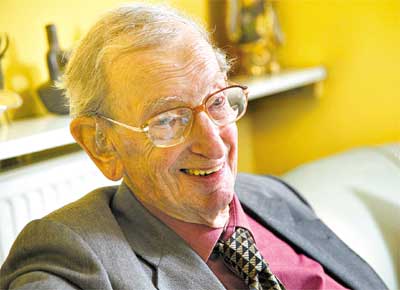
I have argued (repeatedly) — and demonstrated — that mainstream historians of “the historical Jesus” do not follow the basic procedures in evaluating evidence practiced by regular “nonbiblical” historians. Here is another specific case that illustrates this fact, and demonstrates once again the validity of Thomas L. Thompson’s claim that “historical Jesus” scholars have “always assumed there was a historical Jesus to describe.” I came across this particular case when doing some background reading on a nonbiblical historian, Eric Hobsbawm, whom James Crossley draws upon in his study of Christian origins.
The point of the following quotations is to demonstrate that “mainstream historians of nonbiblical topics” understand the basic premise that a narrative cannot be assumed to be based on historical persons or events. In all cases there is a need for external attestation or “controls” to establish this.
Yet “Jesus” historians have ignored this basic principle and assumed there is a historical Jesus to describe. They then proceed to assess what parts of the Gospel narrative are more plausible given plot analysis and reference to ancient customs, etc. This is called “digging beneath the text” to find its “historical core”. This is NOT how renowned historians like Eric Hobsbawm have worked when handling both the literary evidence and first hand reports in their attempts to understand the historical nature of bandits, or any particular bandit, in South America.
In all cases we need independent evidence
Richard W. Slatta quotes Eric Hobsbawm’s statement (in Bandits) stressing the need for external controls before deciding if a given narrative has any historical basis:
In no case can we infer the reality of any specific ‘social bandit’ merely from the ‘myth’ that has grown up around him. In all cases we need independent evidence of his actions. (p.142)
From p.24 of A Contra Corriente: a Journal on Social History and Literature in Latin America (2004)
Slatta himself adds:
Researchers inclined to take folk tales at face value would do well to consider John Chasteen’s conclusion about the creation of caudillo mythology on the Brazilian-Uruguayan border. “Borderlanders collected, refashioned, or even invented outright memorable words of their political protagonists. . . . borderland Federalists constructed an image of the hero they wanted.”
Many scholars have found popular and literary sources, folklore, and first-hand reports by “just plain folks,” to be fraught with difficulties. (p.25)
Exactly like “the minimalists” (& Schweitzer & Schwartz) said
Continue reading “Contrasting methods: “nonbiblical” historians vs “Jesus” historians”
